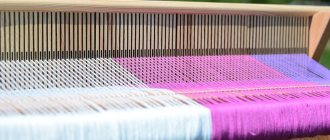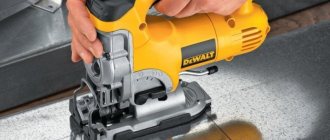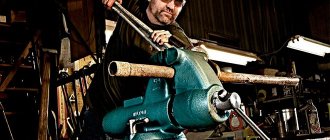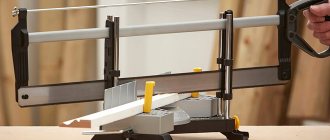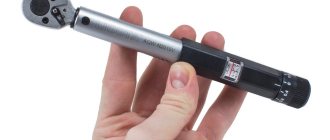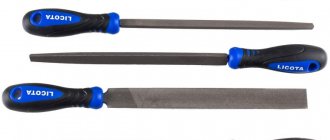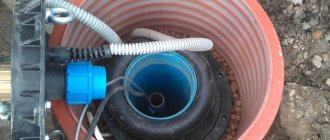Large-scale production, jewelry, repair, “garage” carpentry and metalworking crafts consist of processes for processing blanks of parts for a future product. Any careless movement can ruin the desired result, therefore, in addition to the golden hands of the master, correct fixation of the material is important, and a bench vice does an excellent job of this.
What is a bench vise?
Any craftsman knows that a bench vice is a device that ensures the immobility of a metal workpiece during its processing manually or mechanically. Depending on the type and structure, they are capable of tightly fixing everything: from the smallest golden curl of a future piece of jewelry to a large auto part. The main parameters, design and requirements for bench vices are set out in state standard 4045-75.
The device of a bench vice
Modern manufacturers have provided us with the widest range of options for the appearance of vices. However, any model basically has the same elements of the internal structure:
- Robust support base with a fastening mechanism that tightly secures the tool to the surface.
- Two jaws - static and moving, directly clamping the product.
- The plates on the jaw planes are usually replaceable, with a cut surface for better adhesion to the part.
- A running screw that regulates the movement of the movable jaw;
- Guide rods along which the screw “walks.”
- It is rotary, fixing the desired rotation of the tool.
A common configuration of this device is in which the role of a stationary jaw is played by its base, that is, the moving element presses the product to the surface on which the bench vice is fixed. Since the tool often serves as an anvil, it is preferred to be made of steel; other materials (for example, cast iron) are not able to withstand heavy loads.
What are bench vices for?
As already mentioned, a vice is, first of all, a device for securing workpieces, allowing you to work with them alone and not ask anyone to hold the part. They are suitable for operations with metals, wood or plastic products. In this case, with softer materials it is worth using protective pads on the steel plates of the vice so as not to damage the workpiece. This tool will find its place in the home workshop, in the garage, and in industrial workshops, because it significantly facilitates:
- surface polishing;
- removing excess paint or rust;
- drilling holes;
- elimination of irregularities and defects;
- welding of spare parts;
- milling and other types of work.
Design and Application
Vices are used when processing metals, wood, plastic and other materials in single and small-scale production, as well as when carrying out repair and other operations. Due to their simplicity of design and versatility, most types of vices can be used in everyday life, in small repair shops, and in workshops of large enterprises.
The main working element of the vice is two jaws, between which the workpiece is clamped. The required clamping force is provided by a manually adjustable locking mechanism. One jaw is stationary and securely attached to the body. The second moves under the action of the locking mechanism, ensuring the part is clamped.
The locking mechanism includes a lead screw with a trapezoidal thread. It is connected to the movable part of the housing and ensures its linear movement by rotating clockwise through a nut located in the housing. The rotation of the screw is ensured by a handle. The body of the vice is located on a base plate or frame that has holes for fastening to a workbench or bed of a metalworking machine. Fastening is carried out using screws or a clamp.
The difference between machine vices and metalworking vices
Depending on the specifics of use, devices for securing parts can be machine or metalwork. What are their design and functional differences:
- Machine vices
, as the name implies, are used for processing products on drilling, milling, turning and other machines. They can be mounted on a rotating platform of the equipment, which provides the choice of a convenient angle for fixing the part. The design of such a vice is optimal for reliable installation on the machine: the flat bottom part has long side slits for bolting to the surface. Replaceable linings on the jaws of the device often have V-shaped grooves that improve the vertical and horizontal fixation of cylindrical workpieces. - Bench vices
for home and production are relevant when processing parts with hand or electric tools and are installed on a workbench. The device is attached to the surface with a pair of bolts through holes in the base. A bench vise does not need to be as rigid and stable as a machine vice, so they are suitable for working with softer materials - wood or plastic.
Main characteristics
When choosing fastening devices, you need to rely on the characteristics of a particular model and take into account the tasks that you plan to perform. The most significant parameters are considered:
- The size of the jaws must correspond to the dimensions of the workpiece. As a rule, the width is indicated in the name of the model itself - for example, bench vice 200 mm;
- Gripping range and depth - these parameters determine how much depth and width the device is able to cover the workpiece being processed;
- geometric dimensions and weight - these characteristics are of great importance in terms of ease of work;
- Strength and hardness of materials - the stronger the material, the better the quality of the tool;
- Availability of expanded functionality - for example, bench vices are equipped with a special mechanism that makes the workpiece processing process more comfortable and maneuverable. Thus, labor costs are reduced and time is freed up for completing other orders. Consequently, workshops can accept more orders, which leads to increased profits.
Bench and parallel bench vices (150 mm, 200 mm, 250 mm)
Today it is customary to distinguish between chair, parallel and manual modifications. The first option involves mounting on the edge of the table, and its main advantage is the possibility of quick installation and equally quick dismantling. If necessary, they can be quickly removed, and such models are easy to store. These tools are also available in various modifications - for example, bench vice 150 mm.
Parallel models are more common and consist of a pair of plates, one of which is fixed, and the second is moved by a screw and a threaded bushing. At the base of such devices there are special holes into which mounting screws are inserted for fixation on the workbench. Devices in this modification are the most in demand (especially parallel bench vices 200mm or 250mm) and are suitable for solving many problems related to the processing of long products.
A feature of manual models is the need to fix the clamp with your hands, which may not be very convenient when performing processing. Devices in this design are also available in different sizes, with the most popular modification being the 200 mm hand bench vice.
Stationary and rotary bench vices
Parallel models have an internal classification, which implies division into the following modifications:
- Rotating devices. The base rotates around its own axis and is fixed in a given position. Thus, processing is much easier. To avoid damage to the workpiece, special covers made of plastic, wood or soft metal are put on the plates. Bench vices are the most popular among consumers;
- Stationary devices. These devices are immovable and can only be locked in one position during installation. Like rotary analogues, these devices are available in different designs, and the 200 mm bench vice is in greatest demand.
Types of bench vices
As a type, bench locking vices are also divided into several groups. Let's consider the main ones:
- Manual
. The smallest subtype of vice, the task of which is to fix small workpieces while working with them. They are not fixed to surfaces, but are clamped with one hand, while the other hand is busy processing the part. - Chairs
. The complete opposite of a manual one: a massive, heavy vice that provides the ability to rivet, bend and chop metal in a forge. They are made of high-strength carbon steel, mounted on a stable wooden base - a “chair”, which gave them their name. - Parallel
. The most popular tool for household use. Parallel bench vices are so called because of the strictly parallel movement of the moving jaw relative to the stationary one. Its dynamics are provided by a screw, which is screwed along the guides and regulates the compression force of the workpiece. These vices come in rotating and non-rotating types.
Rotary bench vice
The blank material requires processing from all sides, in order to gain access to which you need to go around the fixed part, bend and turn out, sacrificing your convenience. If you clamp a workpiece in a bench vice, you will have to make several dozen circles around the table while working. The ability to rotate the locking device solves this problem. A rotary bench vise is a standard tool that is equipped with a rotating mechanism that greatly facilitates the work.
Fixed bench vice
When using a vice at home, the rotating mechanism is rarely used, and there is no need for it. A fixed tool for fixing workpieces with a solid body and static installation is often the best option for the home workshop. Additional turning parts add cost as well as the risk of failure, so it's worth assessing your actual needs before making a choice.
How to choose a bench vise?
So, the decision has been made to buy a bench vice, which one is better to choose? To begin with, you need to understand how they will be used: with small parts or large ones, for serious blacksmith work or purely for everyday needs. Once you figure out your goals and read the information above, you can easily determine which type of bench vise is best for you. When choosing a specific model, it is important to pay attention to the absence of play, the possibility of changing lips and key parameters: size and material of manufacture.
Bench vice - dimensions
The two main dimensional characteristics of the device are the width of the jaws and the range of their maximum spreading. These and other parameters are clearly stated in GOST 4045-75 “Hand-operated metalworking vice”:
- The smallest values of these indicators are found in manual vices for small work: their jaws have a width of 6.10 or 16 mm and are set apart by 5.5 or 6.5 mm.
- The standard hand tool is slightly larger: with a width of 36, 40, 50 or 56 mm and an opening range of 28, 30, 40, 50 or 55 mm.
- Ordinary parallel bench vices have the following parameters: jaws of 80, 100, 120 or 140 mm, adjustable by 65, 100, 140 or 180 mm. Moreover, fixed ones, unlike rotary ones, have an even smaller configuration with a width of 60 mm and an opening of 45 mm.
- Large bench vices generally have jaws of 100, 130, 150 or 180 mm, adjustable to 90, 130, 150 or 180 mm.
What material are bench vices made of?
Due to the serious loads on the tool, it is best to choose a metalworker's steel vice. The strongest ones are chair ones, forged from carbon structural steel completely, except for the surface in contact with the product. Tool steel equipped with special notches is used for it. Parallel vices are made lighter by casting their body from cast iron, although the jaws remain steel. Brass or aluminum jaw pads will help prevent dents on the workpiece. Structural and tool carbon steel is also used as material for hand vices.
What are the different sizes and weights of vices?
The weight of a vice depends on its dimensions - as the size increases, the weight also increases. It is also related to the material of the base, bed and jaws. Here are the three main categories of vises:
- Small - length and width no more than 29x14 cm with a stroke of the working part of 80 mm. The weight of the vice does not exceed 8 kg.
- Medium - the jaws expand up to 125 mm, and the dimensions are 37x18 cm. The weight reaches 14 kg.
- Large jaws are capable of fixing parts with a width of up to 160 mm, and the dimensions of the vice are 45.8x22 cm. The weight of the device is up to 30 kg. Due to their large size and heavy weight, they are used only in specialized industries and workshops.
Rating of bench vices
In the sea of a huge selection of vices on store shelves, there are absolute favorites among buyers:
- WILTON WI 21400
. This model is equipped with a rotating design that allows easy rotation around its own axis. A strong anvil, replaceable lips, stylish design and reliability have rightly received the highest rating from users. Wilton bench vices are also famous for their durability. - TSCH-180
. Having an unprepossessing design, this model will give a head start in reliability and stability to its more attractive counterparts. A high-quality instrument of Russian-Belarusian production with an excellent rotating mechanism also attracts with its affordable price. - STAYER 3247-70_Z01
. An instrument unique in its miniature size. Weighing less than a kilogram, this baby will tightly fix the product with strong lips 50 mm wide with an opening of 40 mm. Although unsuitable for heavy-duty forging, this vise will still take pride of place in any home workshop. - SPARTA 186255
. High-strength large swivel model with 180 mm wide jaws, easily fixing products up to 80 mm. Reliability is the main and undeniable advantage of this tool.
Additional selection tips
When purchasing a vice, it is very important to pay attention to its key characteristics:
- Area and width of the jaws – the size of the area determines the reliability of the fixation. In general, the larger the better, as long as the dimensions of the tool match its tasks.
- Stroke length – this parameter determines the dimensions of the parts being processed. To increase versatility, it is advisable to purchase models with the longest possible stroke length.
However, as this characteristic increases, the weight and dimensions of the vice increase, which should also be taken into account.
DIY bench vice
It will not be difficult for a skilled craftsman to make the necessary tool himself. A good homemade bench vise will effectively perform its function, saving a considerable budget. What you will need to assemble the device:
- steel corner;
- channel section;
- metal rod (d = 20 mm);
- guide rods;
- bolts, washers and nuts;
- electric drill;
- welding machine;
- Bulgarian.
Before starting work, you should make a screw from a metal rod yourself or in a workshop using special equipment. Then you can follow the instructions:
- A plate with holes is welded across two parallel sections of the corner from below to secure the future vice to the surface.
- On top of these cuts, across their upper edges, a piece of corner is welded, which will serve as a stationary sponge.
- Opposite it, on the other edge, a corner with a hole and a nut welded to it is also fixed.
- After this, the movable part of the vice is made: a hole is punched in the channel for the lead screw, a nut is welded to it, the whole thing is attached to the flange of a piece of angle and put on the screw.
- The seams are cleaned, all elements are coated with paint and assembled into a ready-made inexpensive bench vice.
§ 15. SECURING WORKPIECES IN A VICE
Types of Machine Vise
Machine vices are very convenient for securing workpieces. They come in various sizes depending on the size of the machine for which they are intended and the size of the workpiece. In Fig. 67 shows a machine rotary vice
, which are attached to the milling machine table using bolts that fit into the recesses of the plate
2
.
A rotating body 1
of the vice is mounted on the plate, secured in any position using a bolt
3
.
The rotation of body 1
relative to plate
2
is set on a scale.
The vice has a fixed jaw 4
, movable jaw
7
, hardened jaw strips
5
and
6
, clamping screw
8
with a square end
10
, on which the handle is placed, guides
9
along which the movable jaw
7
.
To fasten parts, machine fixed
vices are often used (Fig. 68, a), which differ from rotary ones in that they do not have a plate
2
. They are attached to the machine table using bolts that fit into the recesses of the vice body.
For milling planes at an angle (bevels), a universal vice is used (Fig. 68, b), which allows rotation not only around a vertical axis, like a rotary machine vice, but also around a horizontal axis. Such a vice is convenient for tool work, but is less suitable for processing with the removal of large chips, since it does not provide sufficiently rigid fastening of the workpiece.
Installing a vice on the machine table
To correctly install the vice on the table of the milling machine, use the rectangular grooves located at the base of the vice, located perpendicular to one another, the so-called cross groove
. After wiping the base of the vice dry, they are placed on the machine table. Before installation, you need to insert two crackers into the middle groove of the table, which fit into the longitudinal groove of the vice. If the vice needs to be secured across the table, then the crackers are inserted into the transverse groove of the vice. Then the clamping bolts with washers and nuts are inserted into the grooves of the table and the vice is secured with bolts, using the slots for the bolts in the vice plate. When screwing in the nuts of the clamping bolts, you must tighten them alternately, since fully tightening the nuts first on one side and then on the other does not ensure correct installation of the vice. If the vice does not have a cross groove for proper installation on the machine table, you have to align the location of the vice. In Fig. 69, and a diagram is given for aligning the vice in the case when it is necessary to position them so that the jaws are parallel to the axis of the machine spindle. The vice (in an unsecured state) is placed on the machine table so that the milling mandrel installed in the spindle fits tightly against the stationary jaw.
In Fig. 69, b shows a diagram for aligning the vice in the event that it is necessary to position them so that the jaws are perpendicular to the axis of the machine spindle. The vice (in an unsecured state) is positioned so that the square, slightly clamped in the vice, fits tightly without gaps to the milling mandrel fixed in the spindle socket. After the vice is in the correct position (Fig. 69, a or 69, b), they are firmly bolted, as indicated above, to the milling machine table.
Securing workpieces in a vice
To secure the workpiece in a vice, spread the jaws slightly wider than the width of the workpiece, wipe the jaws and the bottom of the vice dry. If the height of the workpiece is less than the height of the vice jaws, you should take one or two steel pads with properly processed parallel planes, wipe them and place them between the jaws on the vice guides. The workpiece mounted on the supports should be approximately 10-15 mm higher than the jaws of the vice. Having placed the workpiece in a vice on the lining, you need to turn the handle of the vice to clamp it and, tapping it with a copper or brass hammer, make sure that it is securely fastened. If the workpiece does not fit tightly, it should be further hammered and further secured. In Fig. 70, a shows a workpiece installed on one, and in fig. 70, b - on two parallel pads.
Mechanization of simple clamping devices
The thinking of innovating milling machine operators is aimed at reducing the time required to install and clamp parts without the use of special tools. eccentric clamps to secure them.
vice (Fig. 71), which significantly reduces clamping time.
Rotation of handle 1
(Fig. 71, b), which has a displacement of head
2
by an amount
e
relative to the center of rotation (Fig. 71, a), causes pressure on the movable jaw
4
and fastening of the workpiece between it and the fixed jaw
3
.
Turning handle 1
in the opposite direction releases the workpiece.
Using special sponges
to machine and eccentric vices can significantly reduce time when processing small batches of parts.
In Fig. 72 shows a vice with special jaws that are put on the main jaws to speed up installation and clamp the levers when milling planes. The processed lever 4
is centered with a hole along the cylindrical protrusions made in special jaws
1
and
2
, and is clamped in a vice.
The support from below is the lining 3
.
Recently, to speed up the fastening of workpieces, pneumatic
or
hydraulic
clamp.
In this case, the entire process of securing (clamping) the workpiece is reduced to one turn of the handle of an air or hydraulic valve. An important advantage of such a vice is the ability to set the required clamping force, which makes their operation completely independent of the worker’s physical strength. The power drive for clamping a pneumatic vice can be piston or diaphragm. In a vice with a piston power drive (Fig. 73, a), air from the factory air network enters through fitting 4
into cylinder
1
and presses on piston
2
, which, with the help of a rod, pulls the movable jaw
6
, pressing the workpiece against the fixed jaw
5
.
The workpiece is released after processing by switching the three-way valve and admitting air through fitting 3
into the left cavity of the cylinder.
Adjusting screw 7
is used to set the required jaw solution.
In a vice with a diaphragm power drive (Fig. 73, b), compressed air from the factory air network enters through the fitting 1
into cavity
2
and presses on rubber diaphragm
5
.
Disk 3,
under the action of diaphragm
5,
rises upward along with pusher
4
, which raises fist
7
sitting in the slot of bar
10
.
The bar 10
is connected to a movable jaw
9
.
Thus, lifting the pusher 4
causes the movable jaw
9
to move towards the fixed jaw
5
and secure the workpiece.
After closing the air valve, spring 6
returns pusher
4
to its original position.
The fixed jaw 5
simultaneously serves as a housing for the pusher mechanism.
The movable jaw 9
, using a bolt
11
with a nut, can be installed on the bar
10
with any overhang within the maximum size
A
= 150
mm
.
The movable jaw 9
and bar
10
have a grooved notch for more durable fastening.
Hydraulic vices usually have a power piston drive. Working fluid under pressure is supplied from the pump to the vice drive cylinder. The use of pneumatic and hydraulic clamping instead of manual clamping - mechanization of clamping devices
- is important.
In addition to a significant reduction in manual time, less effort is required when installing and clamping workpieces, and this leads to reduced fatigue for millers and increased productivity. Previous page
| table of contents | Next page |
